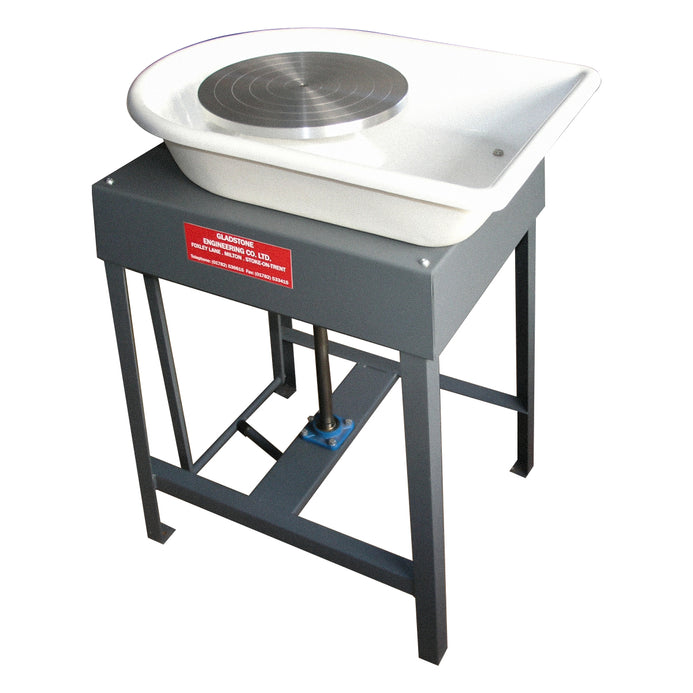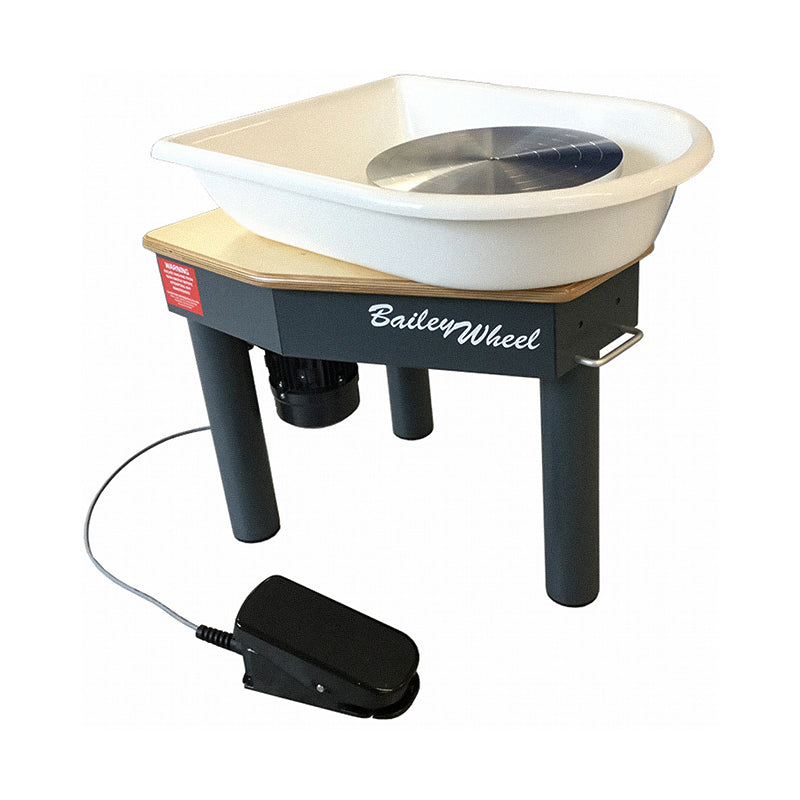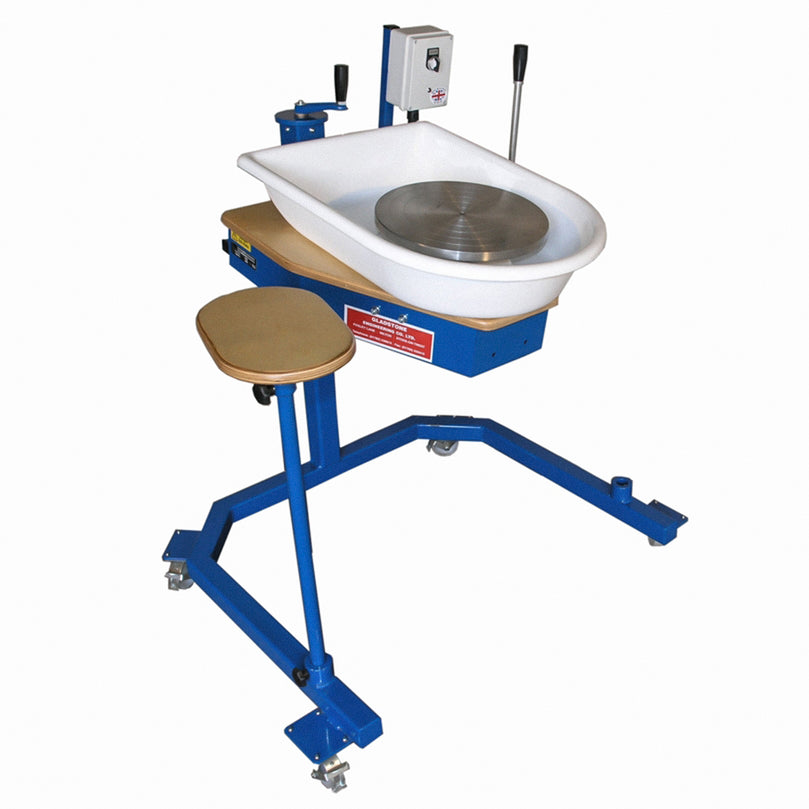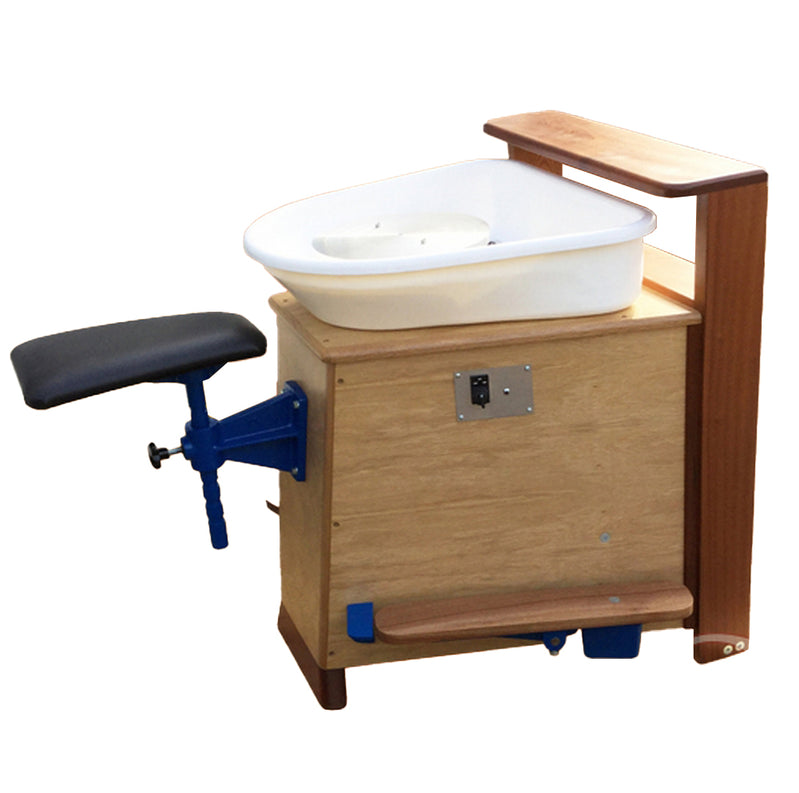
Kick Wheels: Traditional Pottery Wheel Techniques
Kick Wheels: Mastering Traditional Pottery Techniques
Kick wheels have been important in pottery making since ancient times. They started in Sumerian civilization around 4000 BC and are still used by potters today. Check out our pottery wheel collection to find one that's right for you.
Key Takeaways
- Ancient origins dating back to 4000 BC
- Offers better control and a calming experience
- Creates special textures and surface designs
- Eco-friendly option, doesn't need electricity
- Different types available, like Karatsu-style and York wheels
- Takes skill, balance, and focus to use well
- Can be used with other pottery methods for different creations
Why People Love Kick Wheels
Kick wheels give potters a special connection to their craft. They need skill, balance, and focus to use. Unlike electric wheels, kick wheels let potters have more control and feel more relaxed while working. The rhythm of pushing the foot pedal creates a nice flow between the artist and their work.
Many potters choose kick wheels because they can make unique textures and designs. The manual control allows for small changes in speed, which results in pottery with character. Plus, these wheels are good for the environment because they don't use electricity.
Key Features of Kick Wheels
- Ancient origins: from 4000 BC in Sumerian civilization
- Needs skill, balance, and focus
- Gives better control than electric wheels
- Offers a calming experience for potters
- Makes unique textures and surface designs
- Eco-friendly: works without electricity
- Types include Karatsu-style (40 lbs) and York wheels (80 lbs)
- Used by expert potters to make amazing works
- Gladstone kick wheels known for being strong and reliable
Types of Kick Wheels
There are different types of kick wheels, each with its own special features. The Karatsu-style wheel weighs about 40 pounds and is known for being light. The York wheel is a bit heavier at 80 pounds and is more stable and easy to move. Both types have been used by expert potters to make amazing works and even break world records.
If you want a strong and reliable option, Gladstone kick wheels are a great choice. Check out our G33 Standing Kick Wheel for a good example of high-quality craftsmanship.


Learning to Use a Kick Wheel
Using a kick wheel well takes practice and good technique. Start by finding the right posture and position. Sit comfortably with your back straight and adjust the seat height so your legs form a 90-degree angle. This position helps you control the wheel's speed and momentum better.
Controlling the wheel speed is important. Start slowly and gradually go faster as you feel more confident. The key is to keep a steady rhythm with your foot while keeping your hands stable on the clay. As you practice more, you'll learn the perfect speed for different pottery techniques.
Remember to adjust how far you sit from the wheel head. This affects how far you can reach and how much control you have while working. Try different positions to find what's most comfortable and effective for your body type and pottery style. Learn more about pottery techniques on our blog.
Kick Wheels vs. Electric Wheels
While kick wheels offer a traditional experience, electric wheels are also useful in modern pottery studios. Kick wheels give you more control and a deeper connection to the craft, but electric wheels can be more convenient for long pottery sessions or for people with physical limitations.
Gladstone offers both kick and electric wheel options to suit different preferences. If you're interested in electric wheels, check out our G34 Bailey Pottery Wheel, which combines modern convenience with reliable performance.
Kick Wheels for Different Skill Levels
Kick wheels are available for potters of all skill levels. Beginners might prefer a more stable, heavy wheel that's easier to control at low speeds. Advanced potters often choose lightweight wheels that allow for quick speed changes and detailed work.
For potters with special needs, there are adapted kick wheels designed for comfort and accessibility. These wheels often have adjustable heights and special seating arrangements. Check out our Special Needs Pottery Wheel for an inclusive pottery experience.


Taking Care of Your Kick Wheel
Taking good care of your kick wheel is important to make it last longer. Regularly clean the wheel head and surrounding areas to prevent clay buildup. Check the bearings and moving parts for signs of wear, and oil them as needed. If you notice any wobbling or unusual noises, fix the problem quickly to avoid bigger issues.
For wheels with wooden parts, apply a protective finish every so often to protect against moisture damage. Keep your wheel in a dry area when not using it, and cover it to protect from dust and dirt. With proper care, a good quality kick wheel can last for many years. Look at our pottery wheel accessories for maintenance supplies and tools.
Kick Wheels in Schools
Kick wheels are great tools for teaching pottery in schools and workshops. They give students hands-on experience with traditional pottery techniques and help them understand the craft better. The slower, more careful process of using a kick wheel can improve learning and help students control the clay better.
For schools, durability is very important. The G30 Classic Pottery Wheel is made to handle frequent use by many students, making it a good choice for schools and pottery classes.
Using Kick Wheels with Other Pottery Methods
Kick wheels can be easily used with other pottery methods to create unique and varied pieces. Many potters combine wheel throwing with hand-building methods, using the wheel to create basic shapes that are then changed or decorated by hand.
Kick wheels are also great for trimming and finishing thrown pieces. The controlled speed allows for precise shaping and detailing of leather-hard clay. This versatility makes kick wheels valuable in any pottery studio, working well with a range of techniques and styles. Read our blog post on combining pottery techniques for more creative ideas.
Traditional Craftsmanship
Kick wheels offer a physical connection to the craft, preserving traditional pottery techniques
Eco-Friendly
Environmentally friendly option that doesn't require electricity to operate
Versatile Creation
Ideal for wheel throwing, trimming, and finishing, complementing various pottery techniques
Why Kick Wheels Are Still Popular
Kick wheels have been around for a long time in pottery making. They offer a special mix of traditional craftsmanship and artistic expression that still attracts potters of all levels. The physical connection to the craft, the ability to create unique textures, and the eco-friendly nature of these wheels make them important in modern pottery studios.
Looking to the future, kick wheels will likely remain a beloved tool in pottery making. Their simplicity and effectiveness make them a timeless choice for artists who want to connect with the roots of their craft while creating beautiful, one-of-a-kind pieces. Whether you're just starting out or you're an experienced potter, a kick wheel can open up new possibilities in your artistic journey.
Want to explore kick wheels and other pottery equipment? Check out our full range of pottery equipment to find the perfect tools for your creative projects.

